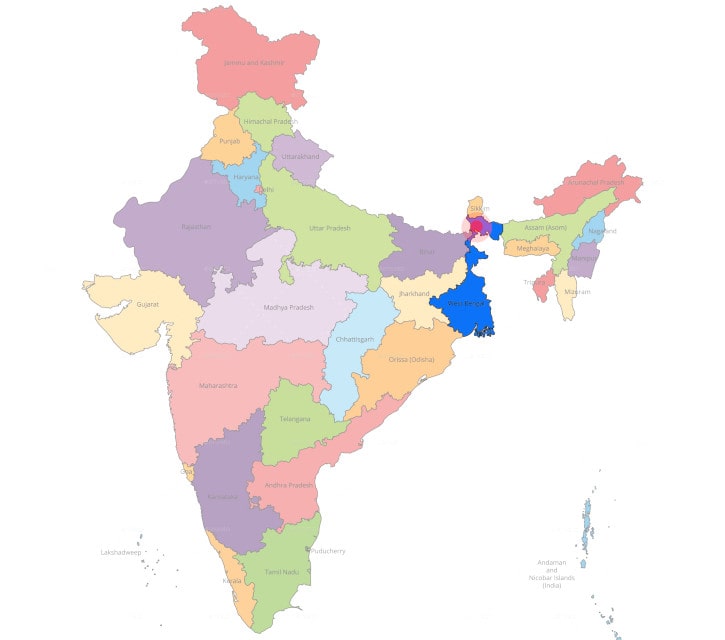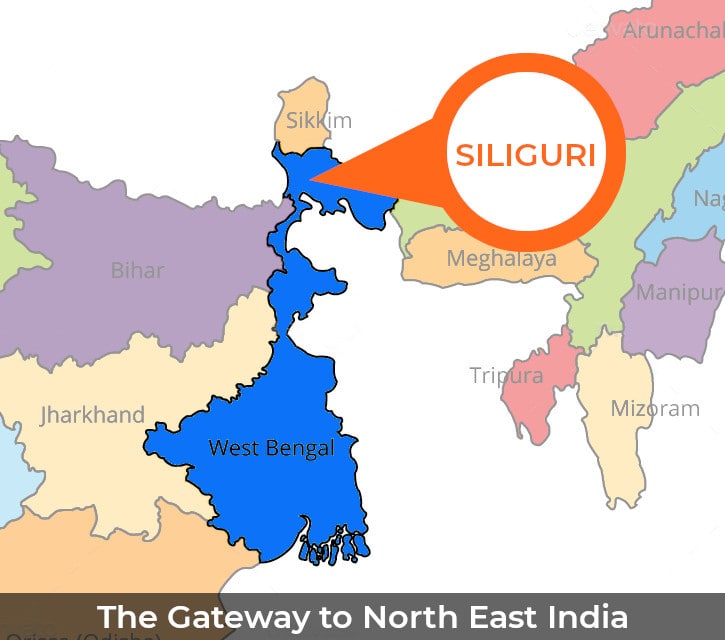

History
Siliguri started as a small area i.e. now Saktigarh, southern part of city, on the bank of Mahananda River. Treaty of Sugauli in 1815 signed between Britain-Nepal, changed the prospect of Siliguri. As it became a point of transit with Darjeeling hills and Nepal mainland. 1815 onwards, Siliguri started growing rapidly as a small city due to its strategic convenience of trade. In 1865, the British captured Darjeeling and the entire Dooars region to build tea plantations and export the produce to England. For easy exportation they introduced the Siliguri Town railway station which stands to this day, and introduced the Toy train from the station to Darjeeling in 1880. This helped Siliguri gain sub-divisional town status in 1907.
Our Pride

Coronation Bridge
It was named to commemorate the coronation of King George VI and Queen Elizabeth in 1937 and was completed in 1941 at a cost of Rs 4 lakhs.[1] The foundation stone of the bridge was laid by John Anderson, the-then Governor of Bengal in 1937.
Locals call the bridge Baghpool, meaning tiger bridge, because of the two lion statues (bagh actually means tiger) at one entrance of the bridge.

DHR Toy Train
Nestled among the rolling mountains with the glistening Mt Kanchenjunga towering over the azure sky, Darjeeling fondly called “Queen of the Hills”, provides a perfect gateway for those seeking to be in harmony with nature.
This is the land of the muscatel flavoured Darjeeling tea revered by connoisseurs across the globe. This is the land of the world heritage Darjeeling Himalayan Railway where the century old miniature steam engine still chugs uphill vying for space with the fast disappearing Land Rovers.
Unless you visit some of the great tourist attractions and sightseeing places, your experience of Darjeeling hills is likely to be incomplete.

Gajoldoba
Gajoldoba is a small village in the Jalpaiguri district of West Bengal. It is located 25 kms distance from siliguri. It is a picturesque tourist destination on the Teesta Barrage fully surrounded by Baikunthapur Forest Gajoldoba is 25 kms from Siliguri, Gajoldoba is a picturesque tourist destination on the Teesta Barrage, Jalpaiguri District adjacent to the Baikunthapur Forest. On the way you can visit Baikunthapur Palace & Gate, Devi Chowdhuranis Temple at Jalpaiguri Town, Tea Garden, Bhabani Pathaks’ Temple at Shikarpur Tea Estate, Bodaganj Forest, Bhramoridevis Temple at Bodaganj (21Km. from Jalpaiguri) and Teesta Barrage at Gajoldoba (Bird watching at Gajoldoba). Kathambari Forest.

Bengal Safari
North Bengal Wild Animals Park (Bengal Safari) has established to showcase the faunal diversity of the North Bengal flood plains to the local people and visitors to the region. The Safari Park has been planned keeping in view the standard and norms formulated by the Central Zoo Authority for its development and maintenance.The Park have good collection of Medicinal Plants.
Bengal Safari plains harbor wild animals like Tiger, Common Leopard, Clouded Leopard, Elephant, Rhino, Himalayan Black Bear, Sloth Bear, Gaur, Sambar, Barking Deer, Spotted Deer, Hog Deer, Wild Boar, Rhesus Monkey, Common Languor, different types of small Cats and Civets, Crocodile, Gharail, Jungle Fowls and a large number of terrestrial and water Birds.

Teesta River, Sevoke
The 309kms long Teesta river (also known as Tista) originates at an altitude of 5,330m from Tso Lhamo lake of North Sikkim Himalayas. The lake is 118kms north east of Darjeeling. Some believe that source of Teesta are both Tso Lhamo lake as well as Teesta Khangse glacier located at an altitude of 7,068 meters.
Teesta then runs downhill through Sikkim and Darjeeling hills for 172kms, then meanders along the plains of West Bengal for about 98kms and eventually enters Bangladesh where it flows into river Brahmaputra at Fulchori.

Beautiful Dooars
The 309kms long Teesta river (also known as Tista) originates at an altitude of 5,330m from Tso Lhamo lake of North Sikkim Himalayas. The lake is 118kms north east of Darjeeling. Some believe that source of Teesta are both Tso Lhamo lake as well as Teesta Khangse glacier located at an altitude of 7,068 meters.
Teesta then runs downhill through Sikkim and Darjeeling hills for 172kms, then meanders along the plains of West Bengal for about 98kms and eventually enters Bangladesh where it flows into river Brahmaputra at Fulchori.
